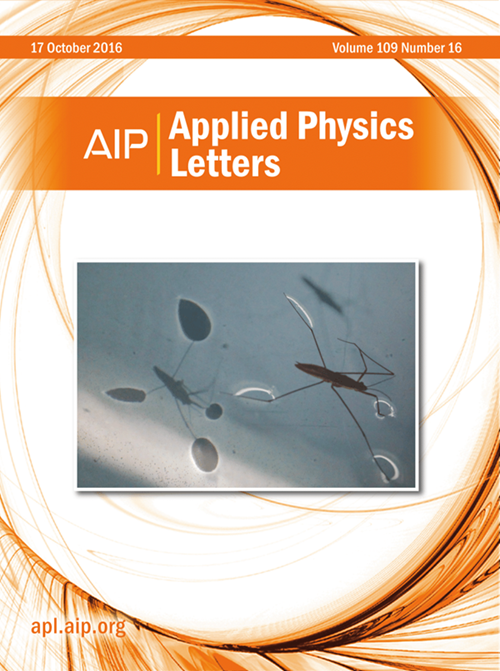获得带有保护帽的大块状相关氧化物表面
IF 3.6
2区 物理与天体物理
Q2 PHYSICS, APPLIED
引用次数: 0
摘要
功能氧化物表现出各种各样的相关电子现象,其中一些对新型电子、磁性和光学器件具有很高的吸引力。尽管我们对这些材料的基本理解已经有了几十年的进步,但它们始终无法实现其在功能设备中的承诺。我们确定了器件实现的一个重要瓶颈是表面过氧化。保护帽可以有效防止过氧化,但其与功能性氧化物的界面尚不清楚。这些界面对于在场效应器件中有效地使用功能性氧化物至关重要,因为“界面就是器件”。这项工作解决了保护帽和相关金属SrVO3(一种模型功能氧化物)之间界面的化学和物理问题。我们比较了五种不同的帽材料,发现在所有情况下都有有效的保护和相似的SrVO3表面化学。表面和体敏光电子能谱的系统比较表明,发生了可忽略不计的界面氧化还原,阐明了cap-SrVO3界面化学。这项工作为钒酸盐表面过氧化问题提供了一个强大而简单的解决方案,为有效地在场效应器件中使用这些材料铺平了道路。我们的结论是一般性的,可以应用于许多其他系统,从而使氧化物电子学更接近功能器件的实现。本文章由计算机程序翻译,如有差异,请以英文原文为准。
Obtaining bulk-like correlated oxide surfaces with protective caps
Functional oxides exhibit a diverse range of correlated electron phenomena, some of which are highly attractive for novel electronic, magnetic, and optical devices. Despite decades of advancement of our fundamental understanding of these materials, they consistently fall short of realizing their promise in functional devices. We identify a significant bottleneck toward device realization to be surface overoxidation. Protective caps can effectively prevent overoxidation, but their interfaces with functional oxides are not well understood. These interfaces are critical for effectively using functional oxides in field-effect devices, where “the interface is the device.” This work addresses the chemistry and physics of the interface between protective caps and the correlated metal SrVO3, a model functional oxide. Our comparison of five different cap materials reveals effective protection and similar SrVO3 surface chemistry in all cases. Systematic comparisons of surface and bulk-sensitive photoelectron spectra reveal that negligible interface redox takes place, elucidating the cap-SrVO3 interface chemistry. This work demonstrates a robust and simple solution to the surface overoxidation problem in vanadates, paving the way toward effectively using these materials in field-effect devices. Our conclusions are general and can be applied to numerous other systems, thus moving oxide electronics closer to the realization of functional devices.
求助全文
通过发布文献求助,成功后即可免费获取论文全文。
去求助
来源期刊

Applied Physics Letters
物理-物理:应用
CiteScore
6.40
自引率
10.00%
发文量
1821
审稿时长
1.6 months
期刊介绍:
Applied Physics Letters (APL) features concise, up-to-date reports on significant new findings in applied physics. Emphasizing rapid dissemination of key data and new physical insights, APL offers prompt publication of new experimental and theoretical papers reporting applications of physics phenomena to all branches of science, engineering, and modern technology.
In addition to regular articles, the journal also publishes invited Fast Track, Perspectives, and in-depth Editorials which report on cutting-edge areas in applied physics.
APL Perspectives are forward-looking invited letters which highlight recent developments or discoveries. Emphasis is placed on very recent developments, potentially disruptive technologies, open questions and possible solutions. They also include a mini-roadmap detailing where the community should direct efforts in order for the phenomena to be viable for application and the challenges associated with meeting that performance threshold. Perspectives are characterized by personal viewpoints and opinions of recognized experts in the field.
Fast Track articles are invited original research articles that report results that are particularly novel and important or provide a significant advancement in an emerging field. Because of the urgency and scientific importance of the work, the peer review process is accelerated. If, during the review process, it becomes apparent that the paper does not meet the Fast Track criterion, it is returned to a normal track.
 求助内容:
求助内容: 应助结果提醒方式:
应助结果提醒方式:


